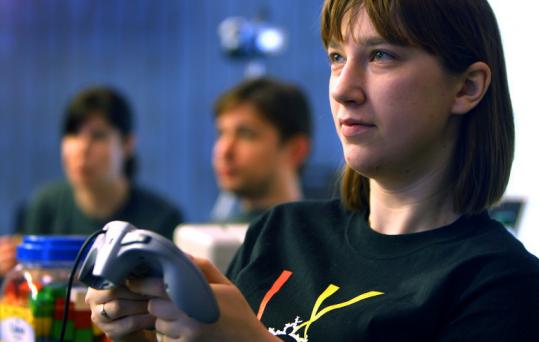Our thanks to Mark Baard of the Boston Globe, who stopped by Gambit’s “Complete-Game Completion Marathon” last week to speak with our then-sleep-deprived staff about the incredible role Gambit plays in developing new modes of gaming.

GAMBIT’s researchers, a collaboration of artists, historians, writing instructors, and educators, are mostly interested in breaking away from gaming conventions: the princess who needs rescuing, the shady merchant with the weapon you must get to survive the next chapter, the mushroom power-up.
They are also focused on teaching courses with heady titles like “Making Deep Games” and publishing papers such as “Bioshock: A Critical Historical Perspective.”
“Everything done in the lab is based on some sort of research interest,” said Eitan Glinert, who was GAMBIT’s first graduate student, in 2007.
At GAMBIT, Glinert created a PC game, AudiOdyssey, in which the player stars as a club DJ trying to get people to dance. The goal is also to avoid getting the dancers so excited that they knock over the turntables.
Glinert said he deliberately emphasized audio quality over graphics, to discover whether “the visually impaired and the sighted can enjoy the same level and quality of game play,” according to the objectives he listed on the AudiOdyssey download page. Researchers at GAMBIT are also conducting research into how people learn through playing games.
Boston Globe — “MIT lab helps designers reimagine video games”



